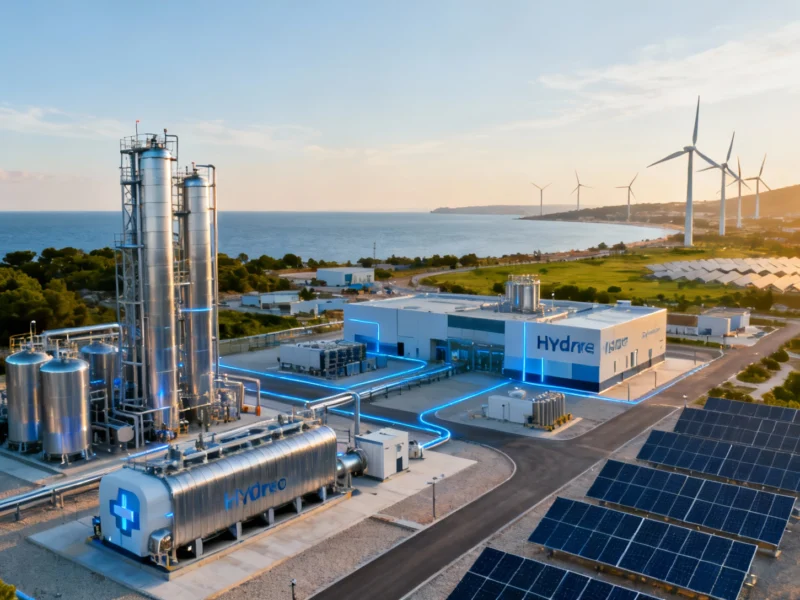Note: Featured image is for illustrative purposes only and does not represent any specific product, service, or entity mentioned in this article.
The Surge in Fusion Funding
Over the past five years, private investment in nuclear fusion has surged dramatically, with total funding approaching $10 billion. This capital influx comes from a diverse mix of venture capital firms, deep-tech investors, major energy corporations, and sovereign governments. While the United States hosts the majority of these ventures and funding, significant activity is also accelerating in China and Europe. This financial momentum reflects a powerful convergence of climate urgency, technological breakthroughs, and a burgeoning ecosystem of private companies dedicated to solving one of energy’s greatest challenges.
Why Fusion? The Driving Forces Behind the Investment Boom
Several key factors are fueling this investment explosion. The global imperative for abundant, carbon-free power is more pressing than ever. Simultaneously, scientific understanding has advanced, supported by innovations in new materials and sophisticated control systems leveraging artificial intelligence. This progress is backed by a wave of capital from technology billionaires and a demonstrated track record of theoretical and experimental milestones. As the world seeks transformative energy solutions, fusion is increasingly seen not as a distant dream, but a tangible goal. These market trends highlight a significant shift in how the energy sector is approaching deep-tech innovation.
The Fundamental Challenge of Taming Star Power
Nuclear fusion is the process of combining light atomic nuclei, such as hydrogen isotopes deuterium and tritium, to form a heavier nucleus, releasing immense energy in the process. It is the power source of stars, including our sun. However, replicating this process on Earth is extraordinarily difficult. The sun’s core achieves fusion through immense gravitational pressure, creating densities 150 times that of water and temperatures around 15 million degrees Celsius. On Earth, we must create even more extreme conditions to compensate for the lack of such gravitational force.
For practical energy generation, scientists focus on fusing deuterium and tritium, which have a much higher probability of reacting than ordinary hydrogen. The catch? This “cross-section” peaks at a staggering 150 million degrees Celsius—ten times hotter than the sun’s core. Containing a superheated plasma at these temperatures requires incredibly powerful magnetic fields, a technological hurdle that has defined fusion research for decades.
The Elusive Goal: Net Energy Gain
The central metric for fusion success is achieving a net energy gain—producing more power from the reaction than is required to initiate and sustain it. So far, this has remained elusive. The most prominent reactor design, the tokamak (a toroidal, or donut-shaped, chamber), holds the current record. In 1997, the European JET reactor achieved an energy output of 0.67 times the input using deuterium-tritium fuel. While the Japanese JT-60 reactor’s experiments suggest a potentially higher ratio, the fundamental challenge of consistent, net-positive energy production remains. This pursuit of energy efficiency is part of broader related innovations in energy storage and management that are critical for a renewable future.
ITER: The Global Scientific Beacon
The International Thermonuclear Experimental Reactor (ITER) stands as the world’s most ambitious public fusion project. Conceived in 1985 as a collaboration between Cold War superpowers, it has grown into a partnership of over 35 nations. After a lengthy design and site selection phase, construction began in Cadarache, France, in 2010. Despite delays, the project is on a path toward a major milestone. Research operations are slated to begin in 2034, with full deuterium-tritium fusion experiments expected in 2039.
ITER is designed to be a proof-of-concept, not a power plant. Its goal is to demonstrate the scientific and technological feasibility of fusion by producing approximately 500 megawatts of fusion power from just 50 megawatts of heating power. Success here would be a watershed moment for the entire field, providing invaluable data and validation. The scale of such projects often spurs industry developments in high-performance computing and robust industrial systems needed to manage complex operations.
The Private Sector’s Bold Timelines
Bolstered by massive private investment, several companies are making aggressive claims about commercializing fusion energy within a decade. They are exploring a variety of alternative approaches beyond the traditional tokamak, including stellarators, laser-based inertial confinement, and field-reversed configurations. These ventures argue that their smaller, more agile, and technologically advanced designs can overcome the hurdles that have slowed larger public projects. The race is on to see if private innovation can outpace established scientific megaprojects. This competitive landscape is driving recent technology advancements across multiple engineering disciplines.
Integration with the Future Energy Grid
The potential arrival of commercial fusion power raises important questions about grid integration. A baseload, carbon-free power source would be transformative, but it must coexist with a grid that is increasingly reliant on intermittent renewables like solar and wind. The development of a resilient and flexible energy infrastructure is paramount. Exploring industry developments in decentralized power and microgrids offers a glimpse into how future energy systems, potentially powered by fusion, might be structured to ensure reliability and efficiency.
Conclusion: A High-Stakes Energy Bet
The nearly $10 billion bet on fusion represents one of the most significant high-risk, high-reward ventures in the modern energy landscape. While the scientific challenges are profound, the convergence of private capital, technological innovation, and global climate needs has created unprecedented momentum. The success of flagship projects like ITER will provide crucial scientific validation, but the ultimate goal of a commercial fusion power plant rests on the ability of private companies to translate that science into a viable, economic technology. The next decade will be critical in determining whether this massive investment will finally pay off, bringing the power of the stars within humanity’s grasp.
This article aggregates information from publicly available sources. All trademarks and copyrights belong to their respective owners.



